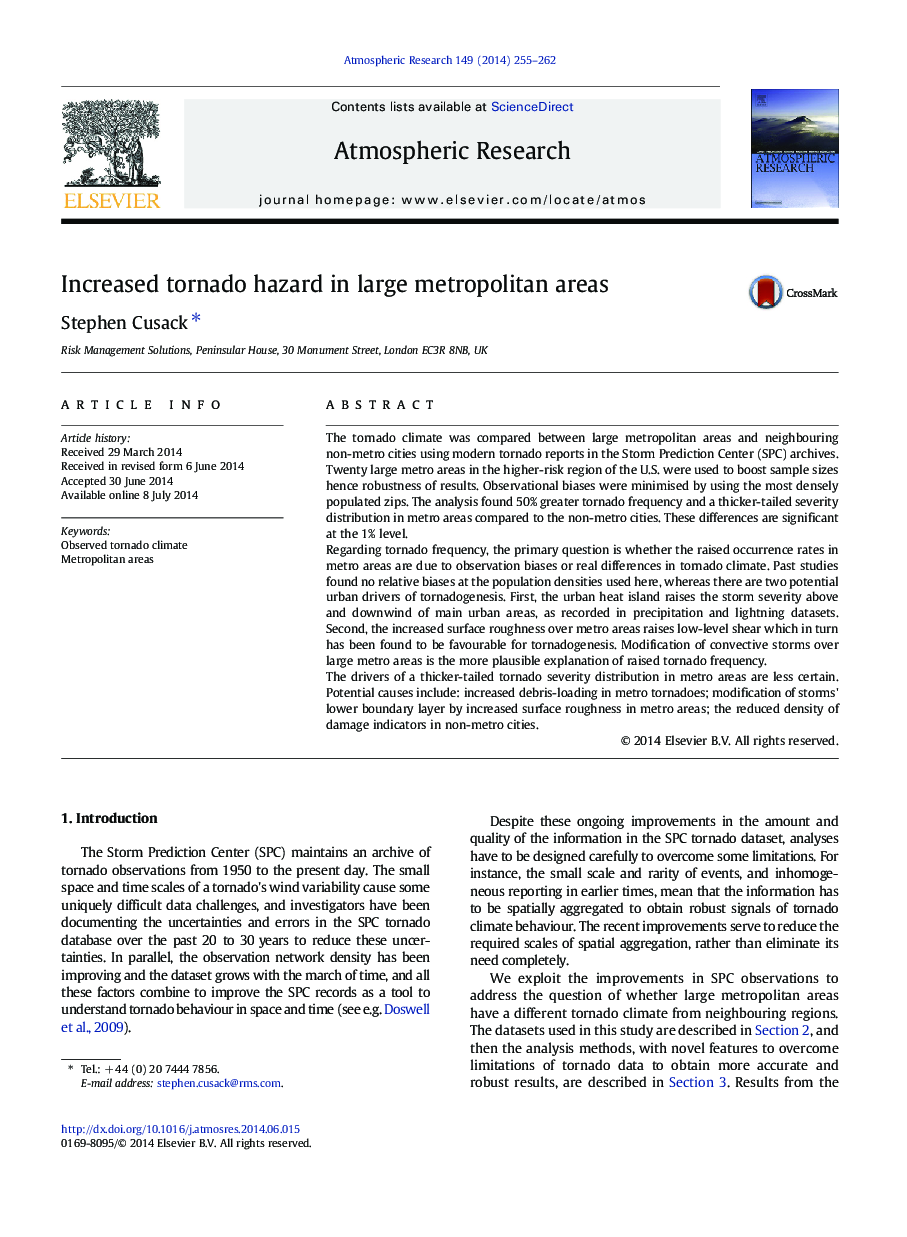| Article ID | Journal | Published Year | Pages | File Type |
|---|---|---|---|---|
| 6343530 | Atmospheric Research | 2014 | 8 Pages |
â¢The tornado climate in major metro areas is compared to nearby, smaller cities.â¢Tornadoes are generally more frequent and severe in large metro areas.â¢Both changes are significant at the 1% level.â¢Urban modification of severe storms is the main driver of increased tornado climate.
The tornado climate was compared between large metropolitan areas and neighbouring non-metro cities using modern tornado reports in the Storm Prediction Center (SPC) archives. Twenty large metro areas in the higher-risk region of the U.S. were used to boost sample sizes hence robustness of results. Observational biases were minimised by using the most densely populated zips. The analysis found 50% greater tornado frequency and a thicker-tailed severity distribution in metro areas compared to the non-metro cities. These differences are significant at the 1% level.Regarding tornado frequency, the primary question is whether the raised occurrence rates in metro areas are due to observation biases or real differences in tornado climate. Past studies found no relative biases at the population densities used here, whereas there are two potential urban drivers of tornadogenesis. First, the urban heat island raises the storm severity above and downwind of main urban areas, as recorded in precipitation and lightning datasets. Second, the increased surface roughness over metro areas raises low-level shear which in turn has been found to be favourable for tornadogenesis. Modification of convective storms over large metro areas is the more plausible explanation of raised tornado frequency.The drivers of a thicker-tailed tornado severity distribution in metro areas are less certain. Potential causes include: increased debris-loading in metro tornadoes; modification of storms' lower boundary layer by increased surface roughness in metro areas; the reduced density of damage indicators in non-metro cities.
